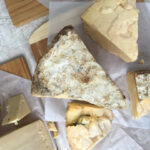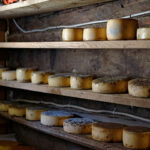GI Values Update
Flour Power
Flour is one of the main foods that has the potential to raise our blood glucose. Though you may think you don’t eat much of it, remember it’s the main ingredient in bread, crackers, biscuits, muffins, cakes and most breakfast cereals. We know from our testing so far that all these foods are top of the pops in raising blood glucose. So, the race is on to develop a flour with low GI power.

A new variety of barley, BARLEYmax,™ a hull-less barley with a unique starch profile is looking promising. Developed by Australia’s CSIRO, BARLEYmax™ was used in a recent trial to produce a low GI breakfast cereal. The test food was a typical extruded breakfast flake made with wholegrain barley flour. The BARLEYmax™ flake had a GI of 50 compared with the same product made with conventional barley wholegrain flour (GI 77). The GI testing was in vivo with 30 participants.
Business Manager Geoff Ball says ‘CSIRO identified the genetic basis of barley’s nutritional properties with the goal of developing a barley variety with significantly improved nutritional properties. BARLEYmax™ not only showed it can be used to produce low GI versions of typical popular breakfast cereals, but it is rich in cholesterol lowering soluble fibre, and has high levels of insoluble dietary fibre and resistant starch. The wholegrain flour can also be used to make breads, muffins and other bakery goods, and in taste tests to date, consumers have given the flavour the thumbs up.’
It’s still early days, so don’t go looking for products made from BARLEYmax™ in the marketplace yet. But watch this space. The CSIRO is expecting that the first commercial crop will be harvested in October 2006. We’ll keep you posted when the products using BARLEYmax™ wholegrain flour have been GI tested and are in the supermarket.
– For more information, contact geoff.ball@csiro.au







